In the vast prehistoric landscape of what is now South Dakota, a fearsome predator once stalked the plains with deadly precision. Dakotaraptor steini, discovered only in 2015, represents one of the largest dromaeosaurids—commonly known as “raptors”—ever to have existed. This remarkable dinosaur has revolutionized our understanding of the Late Cretaceous ecosystem in North America and provides crucial insights into the evolution of the bird-like dinosaurs that would eventually give rise to modern avians. Standing as tall as a human with enormous sickle-shaped claws, Dakotaraptor was an apex predator whose discovery continues to fascinate paleontologists and dinosaur enthusiasts alike.
Discovery and Naming

The first Dakotaraptor fossils were unearthed in the Hell Creek Formation of South Dakota by a team led by paleontologist Robert DePalma in 2005, though the official description and naming didn’t occur until 2015. The genus name “Dakotaraptor” combines a reference to its discovery location in South Dakota with “raptor,” the Latin word for “thief” or “plunderer,” commonly used for dromaeosaurid dinosaurs. The species name “steini” honors paleontologist Walter W. Stein, who made significant contributions to the study of the Hell Creek Formation. This relatively recent discovery demonstrates that major dinosaur finds are still occurring in the 21st century, challenging the notion that all significant dinosaur species have already been discovered and classified.
Size and Physical Characteristics
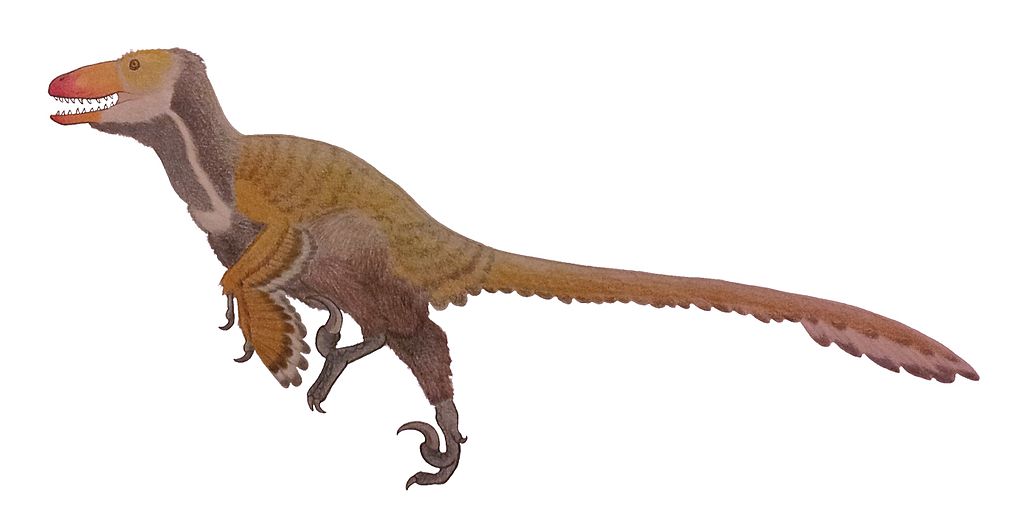
Dakotaraptor was truly impressive in its dimensions, measuring approximately 16-18 feet (5-5.5 meters) in length, which places it among the largest dromaeosaurids ever discovered. Unlike its smaller raptor relatives such as Velociraptor, which stood only about knee-high to a human, Dakotaraptor would have reached about 5.5 feet (1.7 meters) at the hip, making it a formidable presence on the Cretaceous landscape. The estimated weight of this predator was around 350-450 kilograms (770-990 pounds), combining speed with significant mass. Perhaps most striking were its forelimbs, which showed evidence of quill knobs—attachment points for feathers—indicating that despite its large size, Dakotaraptor possessed feathered arms similar to modern birds, though it was certainly flightless.
The Killing Claw
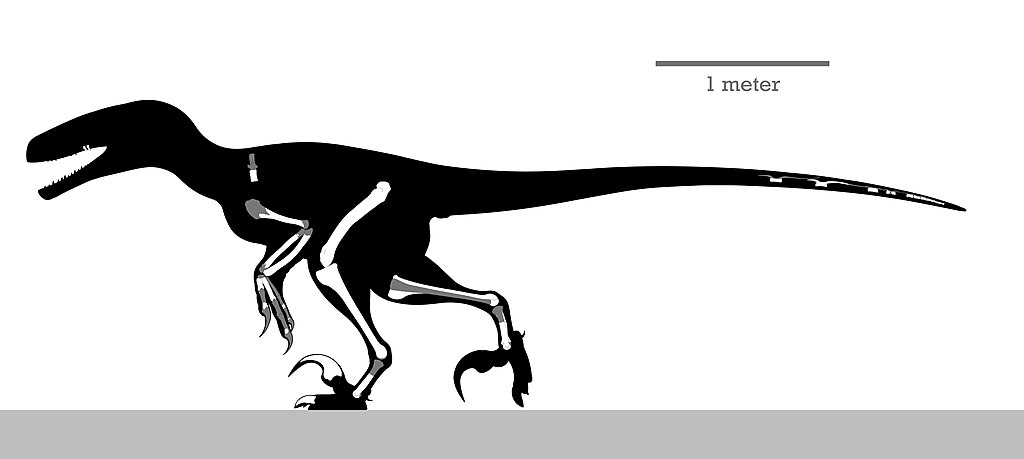
Like all dromaeosaurids, Dakotaraptor possessed an enlarged, sickle-shaped claw on the second toe of each foot, which is arguably its most fearsome feature. This specialized killing claw measured approximately 9.5 inches (24 centimeters) along its outer curve, making it one of the largest such claws ever discovered among the raptor dinosaurs. The claw was likely kept raised off the ground while walking to maintain its sharpness, and would have been deployed during attacks on prey. Biomechanical studies suggest these claws were used to slash at prey, causing deep, bleeding wounds, or to help pin down struggling victims while the raptor used its jaws and forelimbs to deliver killing bites. This specialized adaptation made Dakotaraptor an extremely efficient predator capable of taking down prey much larger than itself.
Feathers and Evolutionary Significance
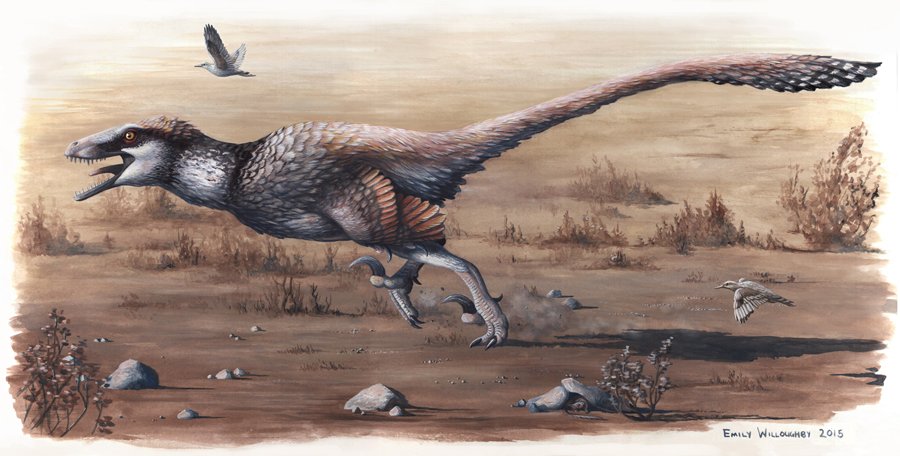
One of the most significant aspects of the Dakotaraptor discovery was the identification of quill knobs on the ulna (forearm bone), providing direct evidence that this large predator possessed feathers. These structures, which are identical to those found in modern birds, served as attachment points for wing feathers. While Dakotaraptor was far too large to fly, the presence of these feathered limbs supports the theory that many large theropod dinosaurs retained feathers long after losing the ability to fly, possibly using them for display, thermal regulation, or brooding behaviors. This discovery helps bridge the evolutionary gap between smaller feathered dinosaurs and larger theropods, challenging previous assumptions that large predatory dinosaurs lacked feathers and reinforcing the evolutionary connection between dinosaurs and birds.
Habitat and Environment

Dakotaraptor inhabited what is now the Hell Creek Formation during the Late Cretaceous period, approximately 66-68 million years ago, just before the mass extinction event that wiped out non-avian dinosaurs. This environment was a lush, subtropical coastal floodplain with meandering rivers, swamps, and forests, similar to parts of modern Louisiana or Florida but warmer and with different flora. The region supported a diverse ecosystem with numerous dinosaur species, including Tyrannosaurus rex and Triceratops. Paleoenvironmental studies indicate the area experienced seasonal variations with distinct wet and dry periods, which would have influenced prey movements and hunting patterns for predators like Dakotaraptor. This rich environment provided ample hunting opportunities for a swift, agile predator specialized in taking down medium-sized prey.
Hunting and Feeding Behavior

As a large dromaeosaurid, Dakotaraptor likely employed hunting techniques that combined the pack-hunting strategies of smaller raptors with the power of larger predators. Paleontologists theorize that these dinosaurs were capable of sustained pursuit, using their long legs for running down prey at speeds estimated at 30-40 mph. The anatomy of Dakotaraptor suggests it was built for agility and maneuverability rather than raw power like Tyrannosaurus rex. Its killing strategy probably involved slashing attacks with its massive foot claws, followed by precision bites with its serrated teeth. Potential prey would have included juvenile hadrosaurs, pachycephalosaurs, and other medium-sized herbivores that shared its ecosystem. There is ongoing debate about whether Dakotaraptor hunted in packs like some other dromaeosaurids are believed to have done, which would have allowed them to tackle even larger prey.
Dakotaraptor vs. Tyrannosaurus Rex

The Hell Creek Formation was home to both Dakotaraptor and the infamous Tyrannosaurus rex, raising fascinating questions about how these apex predators coexisted. While T. rex was significantly larger and more powerful, Dakotaraptor would have been considerably faster and more agile, allowing these predators to occupy different ecological niches. This niche partitioning likely reduced direct competition, with T. rex focusing on larger prey while Dakotaraptor targeted medium-sized animals. However, confrontations may have occurred at carcasses, with evidence suggesting that smaller, more numerous predators like Dakotaraptor might have harassed larger predators or scavenged from their kills. Juvenile T. rex, which were more lightly built than adults, might have competed more directly with Dakotaraptor for similar prey, creating a complex predator-prey dynamic in the ancient ecosystem.
Scientific Controversies

As with many significant paleontological discoveries, Dakotaraptor has not been without scientific controversy. Some researchers have questioned whether all the bones attributed to the initial Dakotaraptor specimen actually belong to the same individual or even the same species. A particular point of contention involves the furcula (wishbone) that was initially described as part of Dakotaraptor, which was later suggested to actually belong to a turtle. Additionally, there has been debate about whether the fossils represent one or two species, as some specimens show size differences that could indicate sexual dimorphism (differences between males and females) or the presence of two distinct but related species. These ongoing debates highlight the challenges in paleontology when working with incomplete fossil remains and underscore the importance of continued research and analysis to refine our understanding of ancient life.
Comparison with Other Dromaeosaurids

Dakotaraptor represents an important evolutionary milestone among dromaeosaurid dinosaurs, occupying a unique position between smaller, earlier raptors and larger predatory dinosaurs. When compared to its famous relative Velociraptor, which stood only about 1.6 feet (0.5 meters) tall at the hip and weighed around 33 pounds (15 kg), Dakotaraptor was truly gigantic. It was also significantly larger than Deinonychus (about 3.3 feet/1 meter at hip) and approached the size of Utahraptor, previously considered the largest dromaeosaurid. However, Dakotaraptor appears to have been more lightly built than Utahraptor, suggesting greater speed and agility despite its large size. These comparisons reveal an interesting evolutionary pattern where different raptor lineages independently evolved larger sizes in different geographical areas and time periods, a phenomenon known as parallel evolution.
Life Cycle and Growth
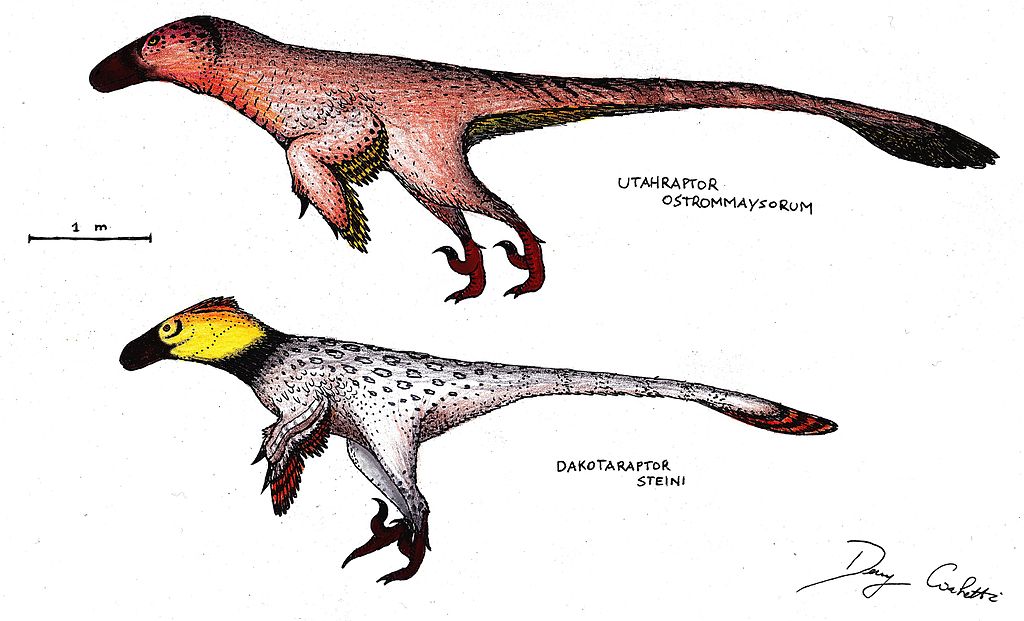
While direct evidence specific to Dakotaraptor’s life cycle remains limited due to the fragmentary nature of the fossil record, paleontologists can make educated inferences based on related dromaeosaurids and theropod dinosaurs. Like most dinosaurs, Dakotaraptor likely hatched from eggs, possibly in nests that were attended by adults, as evidence of brooding behavior has been found in related species. Growth rate studies of theropod dinosaurs suggest that Dakotaraptor probably experienced rapid juvenile growth, potentially reaching adult size within 7-10 years. The presence of feathers indicates that even young Dakotaraptors were likely covered in some form of feathery covering, which would have helped regulate body temperature. As they matured, these dinosaurs would have gradually developed the full predatory capabilities of adults, including their impressive killing claws and hunting skills.
Cultural Impact and Representation
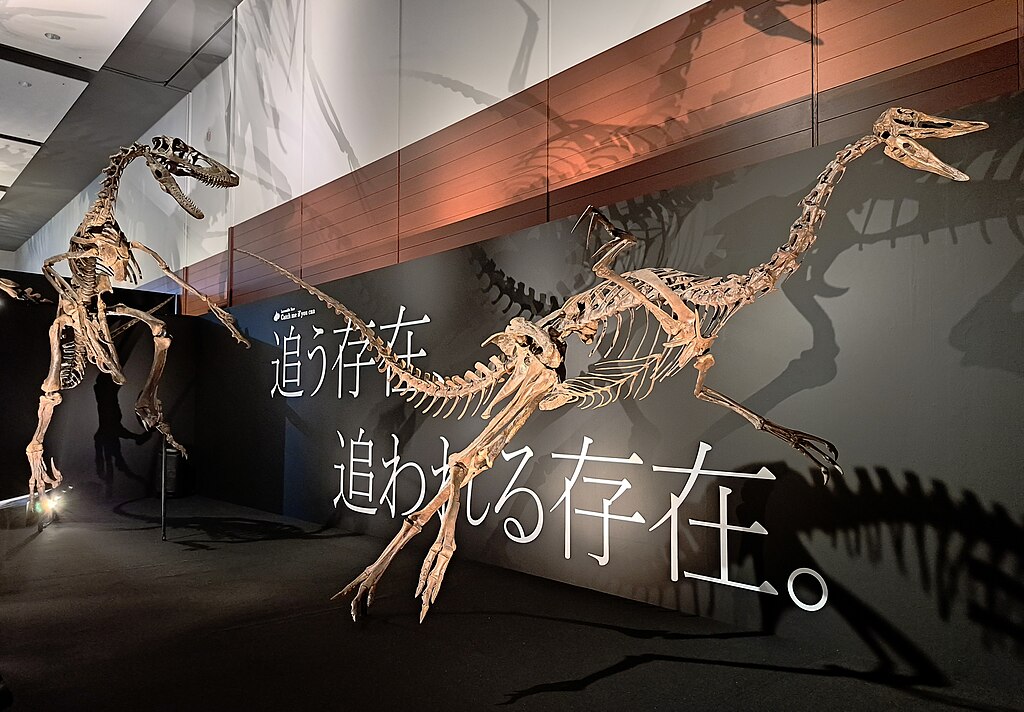
Since its relatively recent discovery, Dakotaraptor has quickly captured public imagination and is gradually finding its way into popular culture and educational contexts. Its impressive size and feathered appearance make it an excellent subject for updated dinosaur representations that reflect current scientific understanding. Several museums have already incorporated Dakotaraptor into their exhibits, often showcasing reconstructions that accurately depict its feathered arms and predatory features. The dinosaur has also begun appearing in books, documentaries, and other educational materials about Late Cretaceous North America. Unlike earlier discovered dinosaurs that were frequently depicted inaccurately in older media, Dakotaraptor has the advantage of being discovered in an era of more scientifically informed paleoart, meaning that public understanding of this dinosaur has generally been more accurate from the start.
Dakotaraptor and the Dinosaur-Bird Connection

Dakotaraptor represents a crucial piece of evidence in understanding the evolutionary relationship between dinosaurs and birds. The presence of quill knobs on the forearm bones provides irrefutable evidence that even large, clearly non-flying theropod dinosaurs possessed feathers, reinforcing the dinosaurian origin of birds. This discovery helps illustrate the evolutionary continuum from predatory dinosaurs to modern birds, with dromaeosaurids like Dakotaraptor representing close relatives to the direct ancestors of birds. The feathered arms of Dakotaraptor likely evolved from structures originally used for flight in smaller ancestors, then repurposed for display or other functions after the lineage increased in size. This exemplifies the evolutionary principle of exaptation, where structures evolved for one purpose are later adapted for another function. Dakotaraptor thus stands as a compelling example of the intricate evolutionary pathway that ultimately led to the birds we see today.
Extinction and Legacy

Dakotaraptor lived during the final stages of the Cretaceous period, disappearing in the mass extinction event that occurred approximately 66 million years ago when an asteroid impact and subsequent environmental changes wiped out approximately 75% of all species on Earth, including all non-avian dinosaurs. As one of the last dromaeosaurids to evolve before this catastrophic event, Dakotaraptor represents the pinnacle of raptor evolution in North America. Its extinction, along with that of all other large predatory dinosaurs, created ecological vacancies that would eventually be filled by mammalian predators during the subsequent Cenozoic era. The evolutionary innovations seen in Dakotaraptor and other dromaeosaurids—including their agility, potential pack-hunting behavior, and feathered bodies—would continue only in their avian relatives, the birds, which survived the extinction event and diversified into the roughly 10,000 species that exist today.
Conclusion

The discovery of Dakotaraptor has significantly enhanced our understanding of the Late Cretaceous ecosystem and the evolution of dromaeosaurid dinosaurs. As one of the largest known raptors, this feathered predator challenges previous assumptions about the size limits of bird-like dinosaurs and provides crucial evidence for the widespread presence of feathers among theropods. Its impressive killing claws, speed, and hunting prowess made it a formidable predator that likely played a key role in its ancient ecosystem. Though Dakotaraptor’s reign ended with the mass extinction 66 million years ago, its discovery continues to influence our understanding of dinosaur evolution and the ancestral connection between dinosaurs and modern birds. As paleontologists continue to study the Hell Creek Formation and analyze existing specimens, our knowledge of this remarkable predator will undoubtedly continue to evolve, providing ever more detailed insights into one of the last great dinosaur predators to roam North America.



